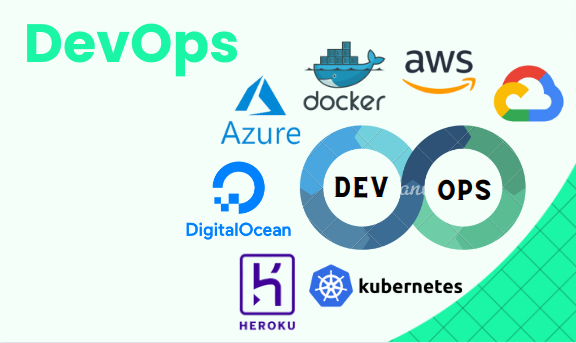DevOps has revolutionized software development and delivery by emphasizing communication and collaboration between developers and operations teams. This culture shift, along with DevOps best practices and automation tools, helps companies launch software updates faster and with fewer defects.
Integrating Development and Operations:
In the past, developers and IT operations worked in siloes with handoffs between teams that slowed releases down. DevOps breaks down barriers so that coders and sysadmins collaborate towards shared goals.
By coordinating efforts, issues can be identified and resolved early on. This prevents bottlenecks like code failing in production after developers think it’s done. Communication pathways in both directions keep everyone aligned.

Key Benefits of Connecting Devs and Ops:
- Faster identification and resolution of defects
- Increased feature velocity through iterations
- Improved system reliability and uptime
- Higher team productivity and morale
Smooth handoffs mean technical teams spend less time debugging and more time innovating. This gets new software out faster.
Utilizing DevOps Best Practices:
DevOps relies on various workflow strategies and architectural approaches to accelerate delivery cycles. Here are some key methods:
Continuous Integration and Delivery:
With CI/CD pipelines, code changes get integrated, tested and deployed to production automatically. This replaces slower manual work.
For example, each code commit triggers the pipeline to run unit tests. If these pass, the app is built into an executable and progresses down the release process.
Automated deployments let teams ship updates many times a day versus a few times a month. This significantly cuts cycle times.
Infrastructure as Code:
With Infrastructure as Code (IaC), release engineers define and provision technology stacks via code instead of manually configuring hardware.
Azure Resource Manager templates, Terraform, and other IaC tools standardize and automate environment building. Want a new test server? Just check some files into source control.
By treating infrastructure like application code, operations teams can move faster. IaC also ensures consistency across environments.
Monitoring and Logging:
In DevOps, comprehensive monitoring provides visibility into apps, microservices, servers, and other components. Logs also collect streams of system events.
This telemetry lets teams assess performance, usage patterns, errors, and other operational health data in real-time. Anomalies can be rapidly detected and debugged.
Monitoring metrics also help optimize release timing. Historical information identifies usage trends so new features can launch right as customer needs spike.
How DevOps Improves Software Quality:
Faster iteration cycles aren’t the only perk. DevOps automation and collaboration also drive major quality gains.
Reduced Defects:
With DevOps, issues surface much earlier in the development process through extensive automated testing. Engineers can fix bugs before they ever impact users.
Monitoring live apps also provides fast feedback on problems. Instead of customers reporting crashes, teams detect them instantly through metrics.
Fixing defects rapidly results in more robust code. Over time, systemic quality improves significantly.
Improved Validation:
In traditional workflows, validation testing happened later on staging environments that didn’t fully replicate production. This allowed uncaught defects to regularly escape.
With infrastructure as code, replicated test environments mirror the real thing. Code can be verified under actual use conditions earlier. Automated acceptance testing then re-checks functionality.
Together, these techniques help prove code works as intended before ever hitting customers. They prevent scrapped releases due to late-stage issues.
Increased Reliability:
All of this drives exponential reliability gains over time. Bugs and failures decrease through preventative measures across pipeline stages. Mean time between incidents stretches longer.
That lets operations staff focus less on fighting fires. Instead they can refine monitoring, disaster recovery, capacity planning and other processes that boost resilience.
Customers experience better uptime and performance. Reputations grow. Bottom lines improve.
The Value of Faster, Better Deployments:
By fostering collaboration between technical staff and leaning on impactful workflows, DevOps breaks barriers that traditionally slowed software delivery while providing higher quality output.
Features launch exponentially faster thanks to automation and iterative improvement. Code reliability also increases over time. This lets engineering capacity support more business goals.
That agility delivers all sorts of strategic advantages. Companies can react quicker to market changes. Innovative ideas make it live rapidly. Tech truly becomes a competitive differentiator.
Through cultural change and smart process improvements, DevOps sets up organizations for digital success and leadership. The numbers don’t lie – industry surveys consistently show adopters ship code up to 30x more frequently than peers while cutting change fail rates by up to 15x.
Those metrics will continue improving too. As DevOps matures, development velocity keeps increasing while quality climbs.
For established companies, tech-savvy startups, and everyone in between, embracing DevOps accelerates your most important catalyst: Great software that delights customers. The outcomes directly impact the top and bottom lines.
It’s past time to optimize release cycles. With DevOps, technical teams operate at their highest capacity while users get more responsive innovation. Everyone wins.

